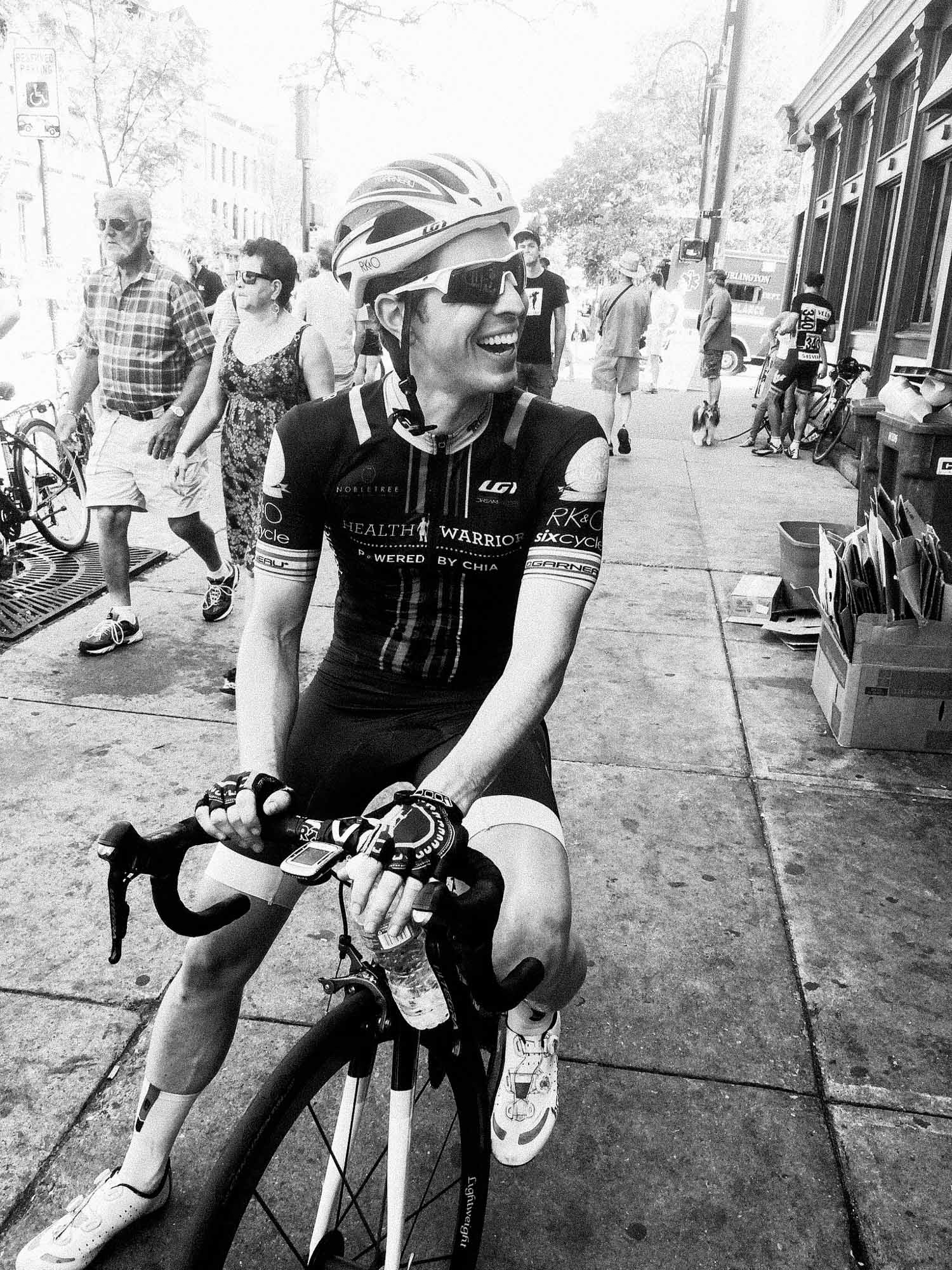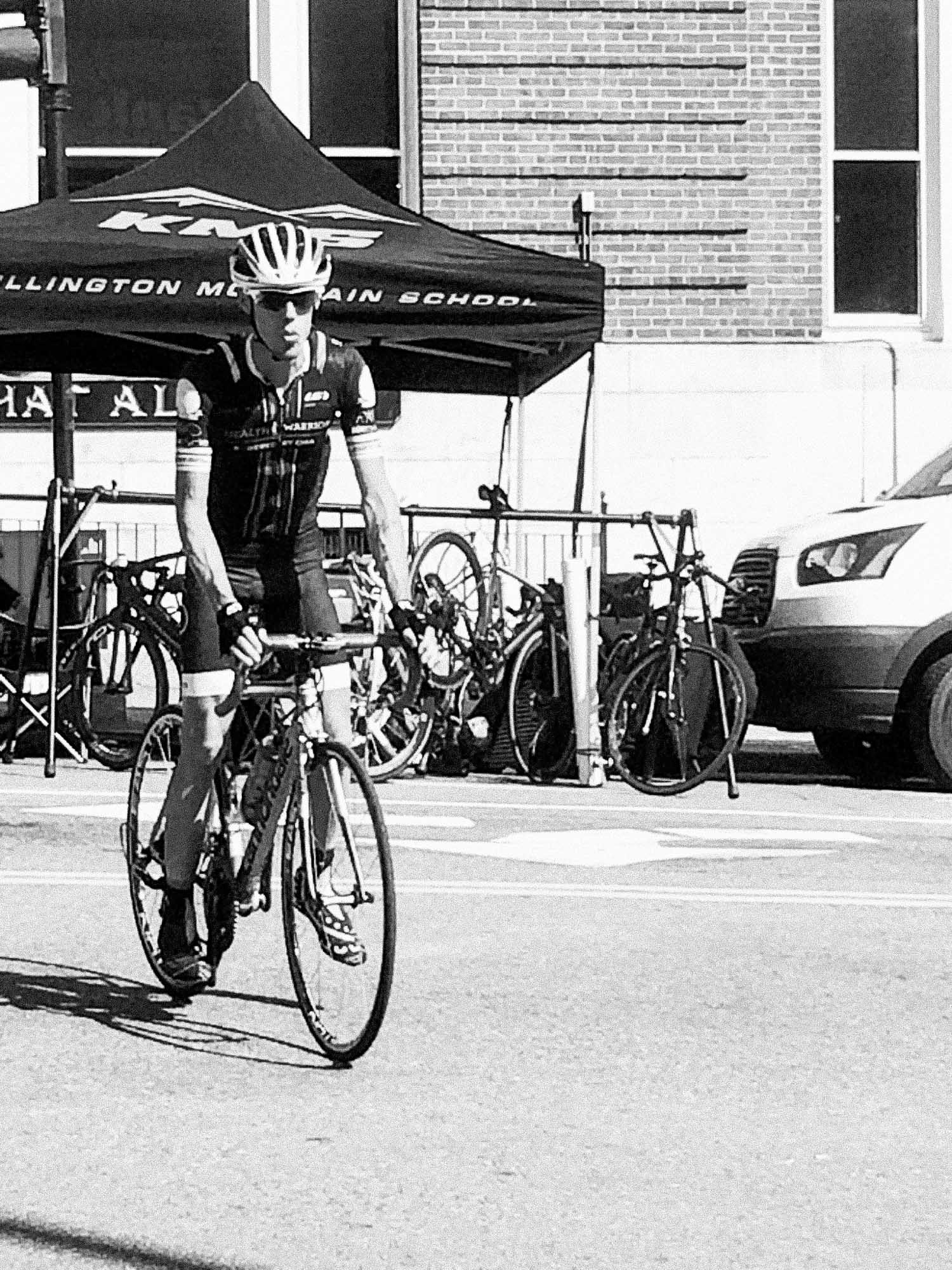The Interview: Richard Scudney and A Racer's Perspective on GMSR
As focus shifts to cyclocross season, we look back at the 2015 road season via an interview with Team Health Warrior's own Richard Scudney to discuss the challenges and dedication required to prepare for the Green Mountain Stage Race.
What is your history with GMSR? I have a long history with GMSR, and it’s my favorite race. All of my training and racing is about making sure I’m as fit as possible for GMSR. It’s the race that I want to do really well in.
The first time I did it was back in 2011 when I was still a Cat 4. I was coming off an awesome result at Tour of the Catskills, and I did GMSR with all of that confidence behind me. I did really well. I placed 2nd on the third stage (ed., the so-called ‘Queen Stage’ that finishes atop Appalachian Gap), and took 4th overall. The following year I’d just upgraded to a Cat 3 before GMSR. I was feeling good, but I broke my wheel on one of the stages and it really took me out of contention. That was extremely frustrating because I had done really well in the time trial, too. I did GMSR again in 2013, also as a Cat 3, and finished Top 10 or Top 11 on General Classification. I remember the field was really strong that year.
I did GMSR for the first time as a Cat 2 in 2014. That was a completely differently experience! It was all about how long you can suffer before needing to back off. In the Cat 2s, everyone can climb. Everyone is really strong. It was a real eye opener for me, and the experience taught me just how much of cycling is mental. I discovered I really needed to learn to suffer. The climbing for me that year was so painful, and I wasn’t prepared for it. This year I went to GMSR having been a Cat 2 for a full season, and I knew more of what to expect going into it. I was more ready mentally as well. I learned to be convinced that I was a Cat 2 for a reason and quite the voice that tells you to stop when you start to hurt in a race.
Where did the race stack up in terms of overall season goals for you? GMSR was my top goal. Because it’s at the end of the season, I consider all of the racing and training that I do leading up to it as part of my preparation. It’s all about building up for this race.
How did you feel going into it? I felt really good going into the race. I crashed in the crit at the Tour de Millersburg three weeks prior to GMSR, and to get over that I immediately started racing again. I did the CRCA races in Central Park and the Thursday night crit out at Rockleigh. It was important for me to just keep going and avoid having any sort of hesitation set in, even subconsciously.
But going into it, yeah, I felt really good. My training was really good this year. I always feel like you should train your weakest link, and that for me was crits. I used to hate crits! It’s big guys with quads the size of basketballs! I raced the Thursday night series at Rockleigh to get used to those really hard, 1-hour efforts, to improve my bike-handling skills, how to get in the break, getting the race IQ and the fitness and mental preparation connected to knowing how to suffer. It gave me a lot of confidence to see how my results at Rockleigh would steadily improve from 50th to 40th to Top 10.
Beyond the racing and riding, I in the week before GMSR I’d also just take a moment out of every day and visualize how I’d tackle the time-trial course. I’d just think about me, the bike and the pain. I’d focus on hitting the hill as hard as I could. Once my mind tells me that “This hurts, you should stop”, that’s when I know I should push myself harder. That’s what I was preparing myself mentally for – that negative voice.
What specific training did you do for the 15-20 minute sustained climbing efforts that GMSR is known for? I worked a lot with Matt Richards, our teammate who also runs the SixCycle training platform. A lot of what I did on the weekends was just 3-4 hour tempo rides, without stopping. A lot of times those rides sucked because I’d do them solo and miss my teammates or do them early in the morning because I had to be at work later that day. I also did a lot of work on Bear Mountain. That climb is really good because you can do these 20-minute efforts and experience what it’s like to be really hurting but still have two miles to go to reach the summit. About two months before GMSR I’d hit Bear Mountain every other Sunday, and then the month before I’d go up every Sunday. Mentally, it helped a lot. It’s just you, the bike and the pain.
You had a phenomenal time trial. Can you walk through your effort? My warm-up was about an hour-and-a-half. I did lots of high cadence drills and some hard, 2-minute efforts. I felt pretty good. When I got to the start line I focused on just breathing deeply, and trying to get in as much oxygen as possible. I kind of sprinted off the line and I stayed in my big chain ring the entire climb (ed., the course is a 2.5 mile climb followed by 3 miles of flat to down-hill). I didn’t want to have to worry about shifting and risk dropping my chain! I felt super strong on the climb. I caught my 30-second man, and my 1-minute man by the top. Then on the flat section my 1-minute man caught me back and he was about 10-15 seconds ahead of me, but always in sight. I used him as a target, and even though my legs were screaming at that point, I just tried to keep him there. He was a big guy, and I knew that I wouldn’t be losing time if I could hold that effort. In the last 500m, up a false flat, I just tried to spin my legs as much as possible. Fortunately, it was good enough for 5th place.
What happened on the Queen Stage that finished atop App Gap? This was a really tough stage. We raced more than 90 miles. Things were going well through the first 60 miles or so. Then a 4-5 man break went up the road. As we approached Baby Gap for the second time, the field was slowed down quite a bit by the teams that had guys up in the break. I made a little move off the front. It wasn’t a really strong move, as I didn’t want to burn out before App Gap. The field didn’t respond. Then, a couple guys bridged and we rode hard up Baby Gap. The field caught us and the pace exploded. The pace really picked up heading into the base of App Gap, and as soon as we hit the climb I just looked down at my power meter and said, “This is the wattage I’m going to do.” I just felt fantastic. I rode my own pace up the climb and one by one guys from the lead group dropped off the pace. At one point I looked back and no one was there, and I thought, “This is phenomenal!” I passed one of the guys who had been in the break. He’d cramped out and was on the side of the road. I felt so bad for him for all the effort he had put in that day! Then, I saw the SRAM neutral support vehicle up the road, and new I was close to the break. I just kept on going, and passed one other guy of the break. I saw the second place guy up the road in the last couple hundred meters, but by that point I didn’t have the legs to catch him, and so I crossed the line in third.
You only had one teammate with you in the field to help. What was it like having Tom Hendry there? It was awesome to have Tom there, and it was really bad when he crashed out on the last day. It was great to be able to crack some jokes with him in the field when either of us got a little nervous. Tom and I also did a lot of training up at Bear Mountain together, and to see him absorb all that training was great. He attacked on the second day and battled for some of the KOM points. He was climbing really well. It’s always great to have someone you know in the race with you, and even better when that person is as capable and strong as Tom.
What does this result mean to you in the context of your career palmarès? It’s great, and it definitely gives me a lot of confidence. It also confirms my love of the hills! Climbing is so much fun! But seriously, cycling is a lot like trying on different shoes, and they don’t always fit. And then you find something that fits, that works. This year, I was fortunate to find the type of training that really works for me. You have to keep testing yourself and your methods and your approach to things. Then when you find what works, you blossom.





















